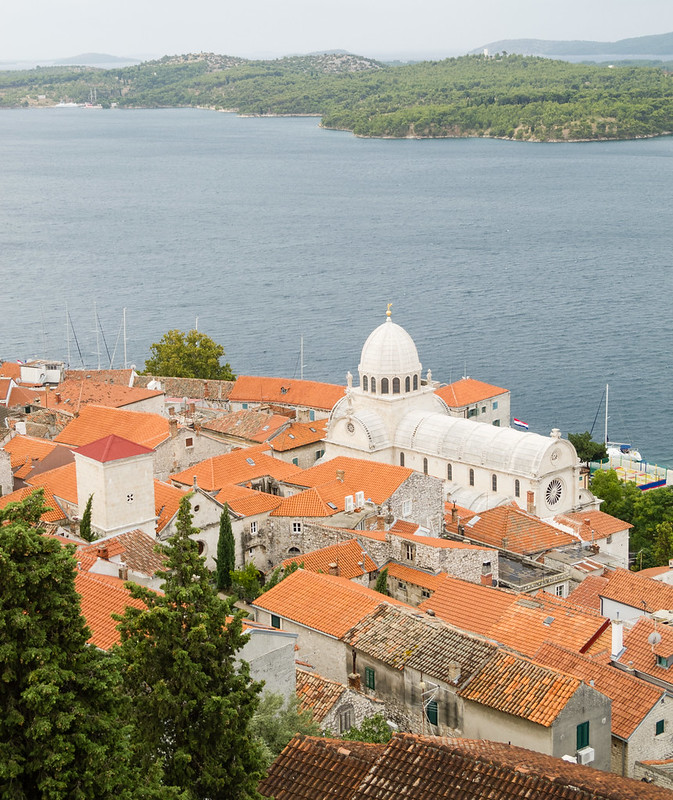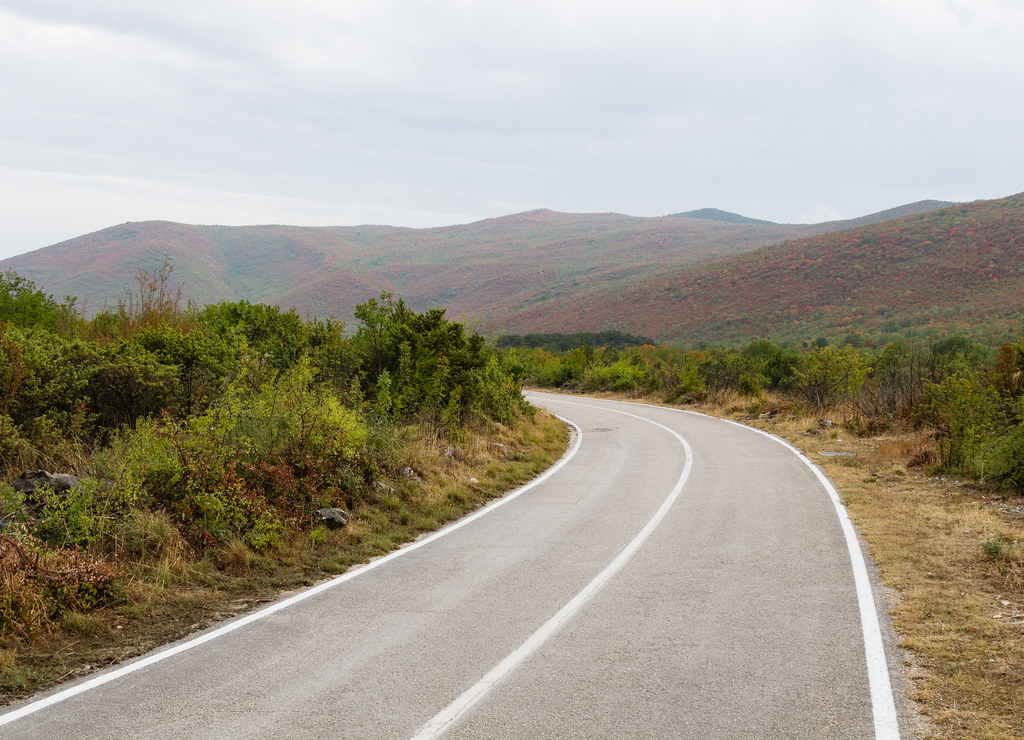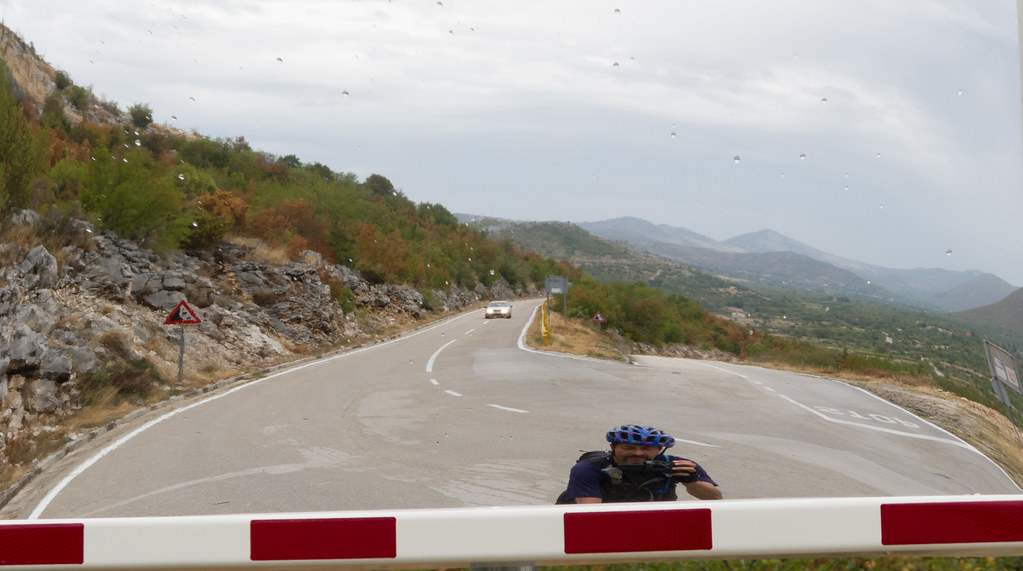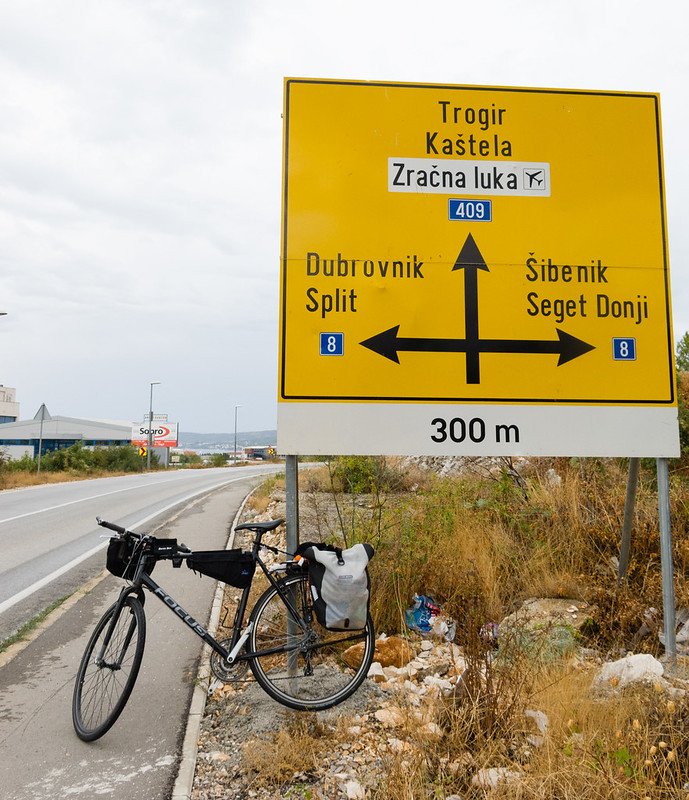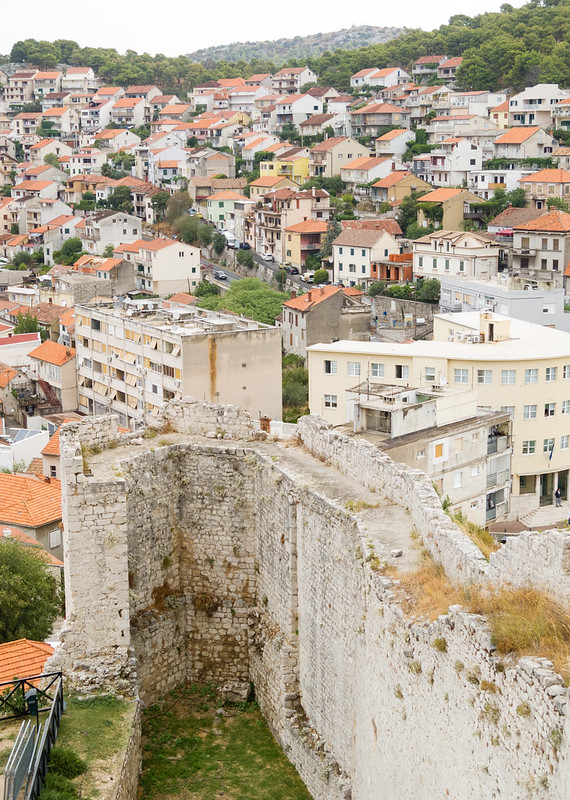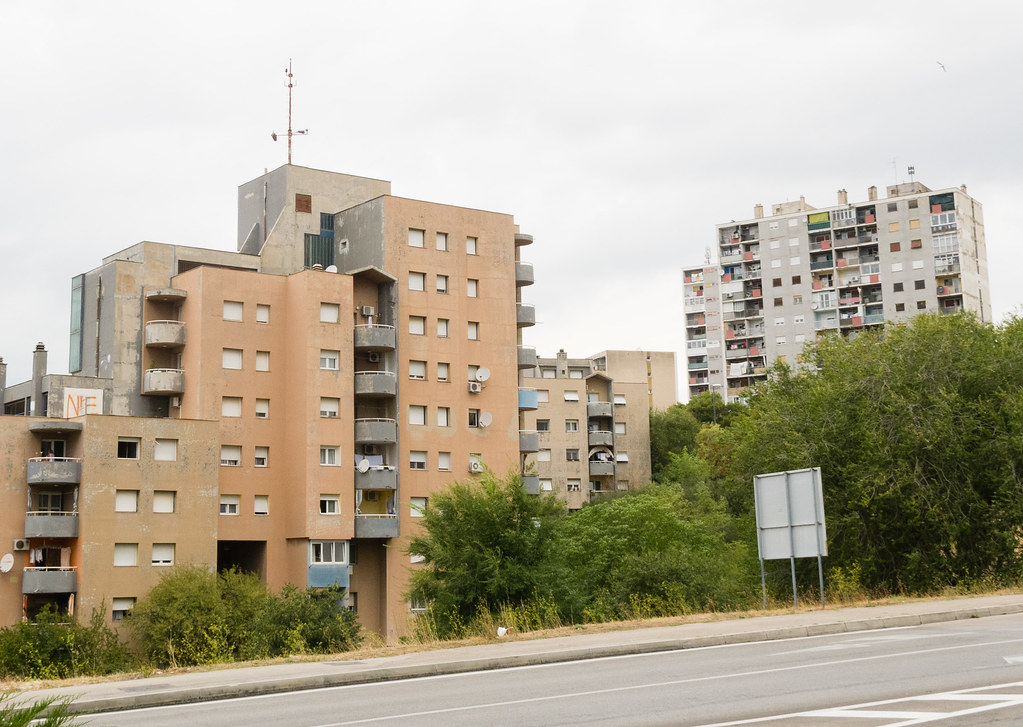It was going to be another easy day. Right? Only 74 km on the ride profile, max elevation 400m. Of course by now I knew that everything is hilly in Croatia, so the riding is never as easy as it might seem on paper. Still, I really liked the look of Šibenik, so I had breakfast in the garden of the convent, then checked out one of the fortresses, and the basilica. This area of Croatia is full of white rocks; those became the basis for construction, so the cities sparkle.
The cathedral was bombed during the September War, leading to charges that the Yugoslav army was targeting Croatian cultural treasures.
There were still some storms around, and headwinds, though not as bad as yesterday. Getting out of the city was a little tricky, requiring some sidewalk riding, but after leaving the city proper, the riding was fine, though rolling hills with moderate traffic.
Near the village of Vrpolje, RideWithGPS directed me to turn onto a dirt road. I was suspicious after the last couple couple of diversions, but this one turned out to be a good call. After only a few hundred meters, the rideable dirt led to a well-paved highway which had been abandoned or never completed. It had large-scale road signs and everything. It was a bit eerie being on a zombie highway, but it was good riding through nice surroundings. This route had a little extra climbing but it was really nice bike touring, clearly worth the diversion.
I was still trying to dodge storms, and near the top of the climb a thunderhead came over the ridge; I holed up in another bus shelter. This storm was not as intense as yesterday’s, but the lightning was closer this time, 5-6 secs between flash and bang, with some very impressive thunder.
After the storm mostly cleared, I got back on a nice minor road heading towards Split.
I imagine that the guy who installed this sign was smiling at the time.
The road followed the bottom of a deep valley, and I could see a parallel rail line high on the ridge above. I know enough civil engineers to be able to predict that the rail line will cut through the pass at the lowest possible point, which meant there was still a pretty massive climb in my future. After about 10 km in the valley it loomed ahead; quite steep, but no real problem.
Croatian convex mirrors are better for selfies than the U.S. ones.
The storms were still moving around the sky, and I was riding fast, hoping that the rain would hold off for the descent. It did, so I got to have lot of fun heading over the ridge to the coast. It got me to thinking that the topography of this area was a little like Cinque Terre, with a big ridge separating a bunch of ports from the rest of the mainlain. Except in Cinque Terre they never built these roads.
Near the bottom of the descent I saw my first sign for Dubrovnik. (Obligatory photo).
Daily musing: Context and the medieval city
In a medieval city, everything exists in context: in relationship to the fortress, the church, the plaza, the waterfront. Even the shape of your house depends on the shape of your neighbors’ houses.That sense of relationship and context is what the modernists broke.City planning is still trying to recover.


